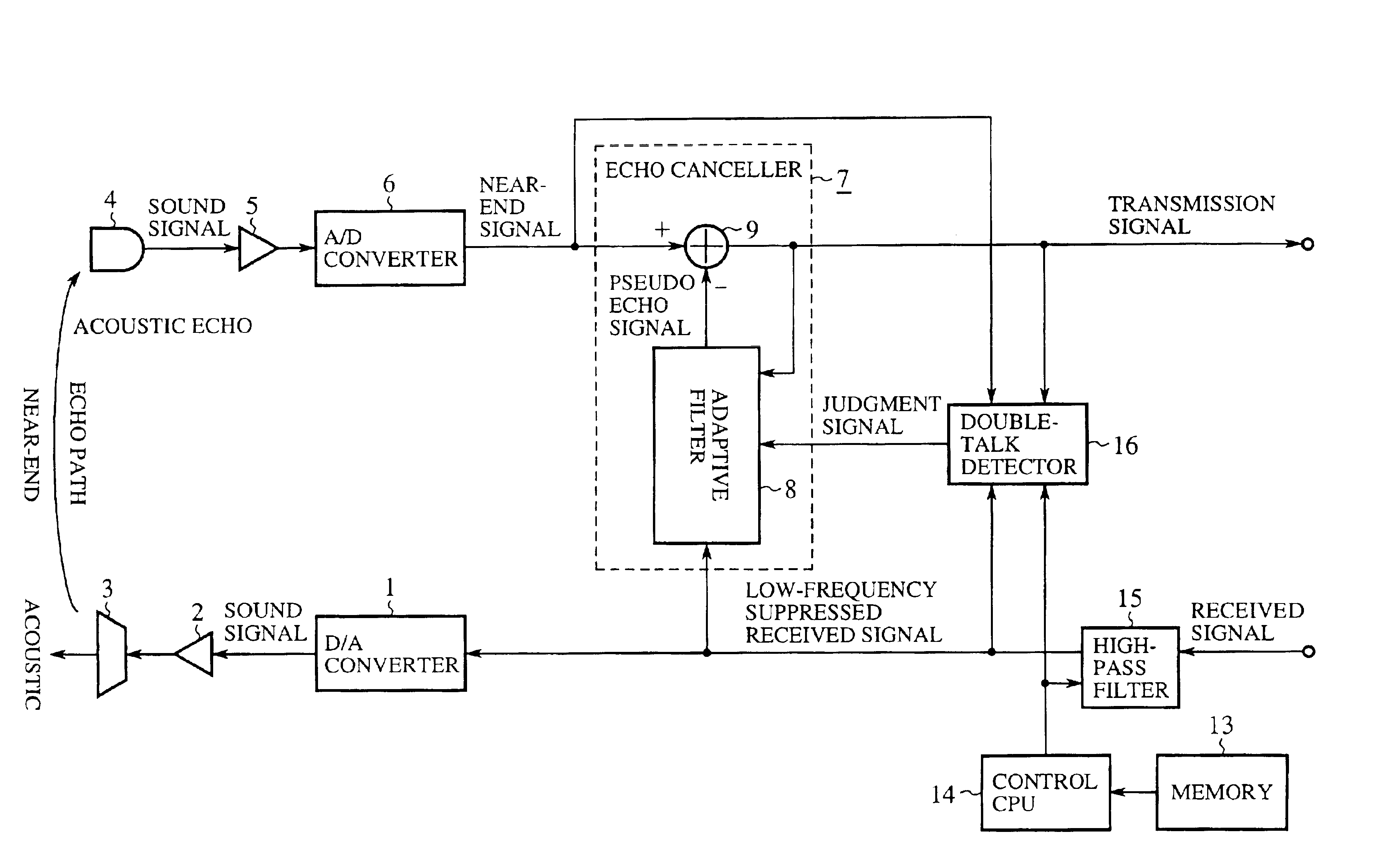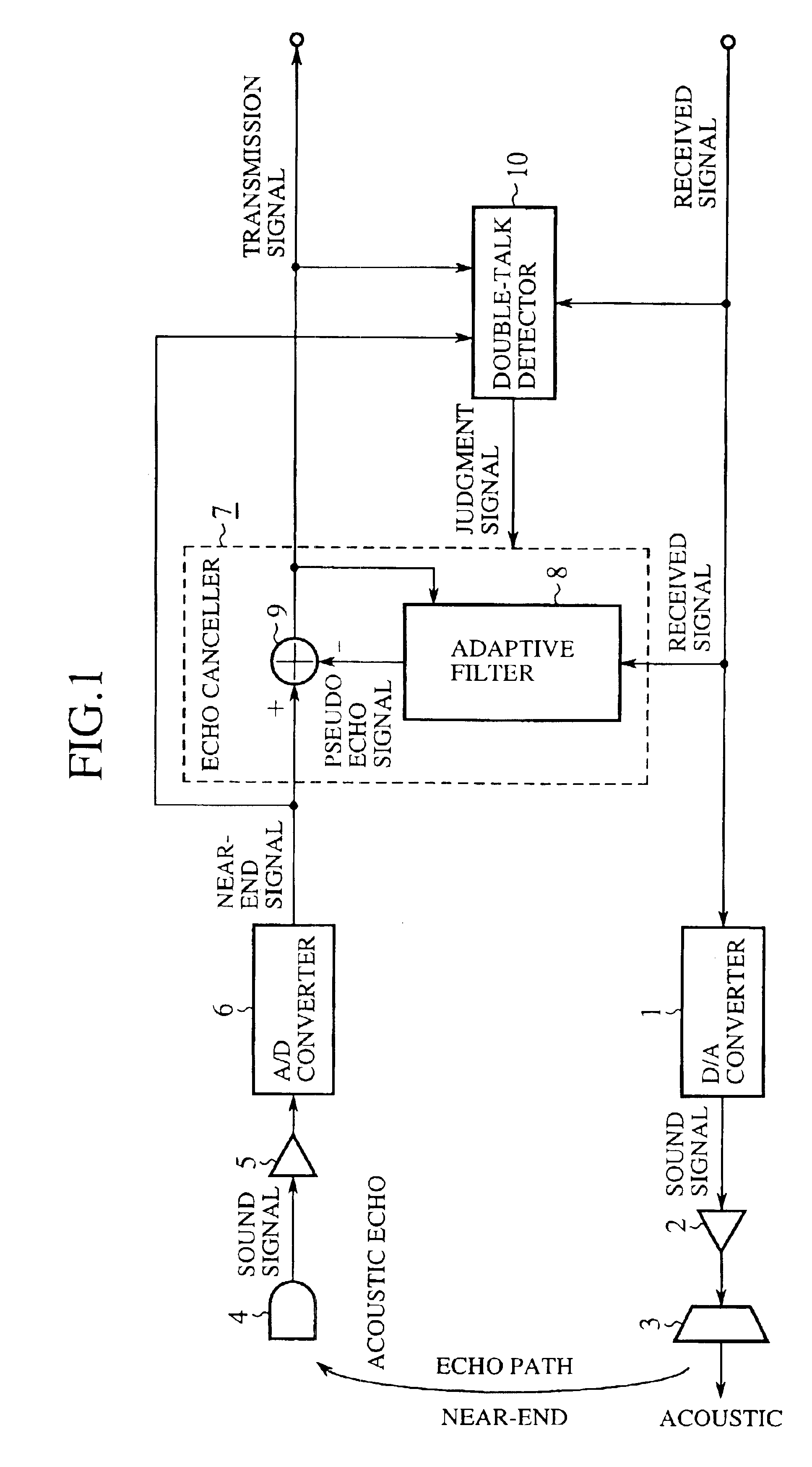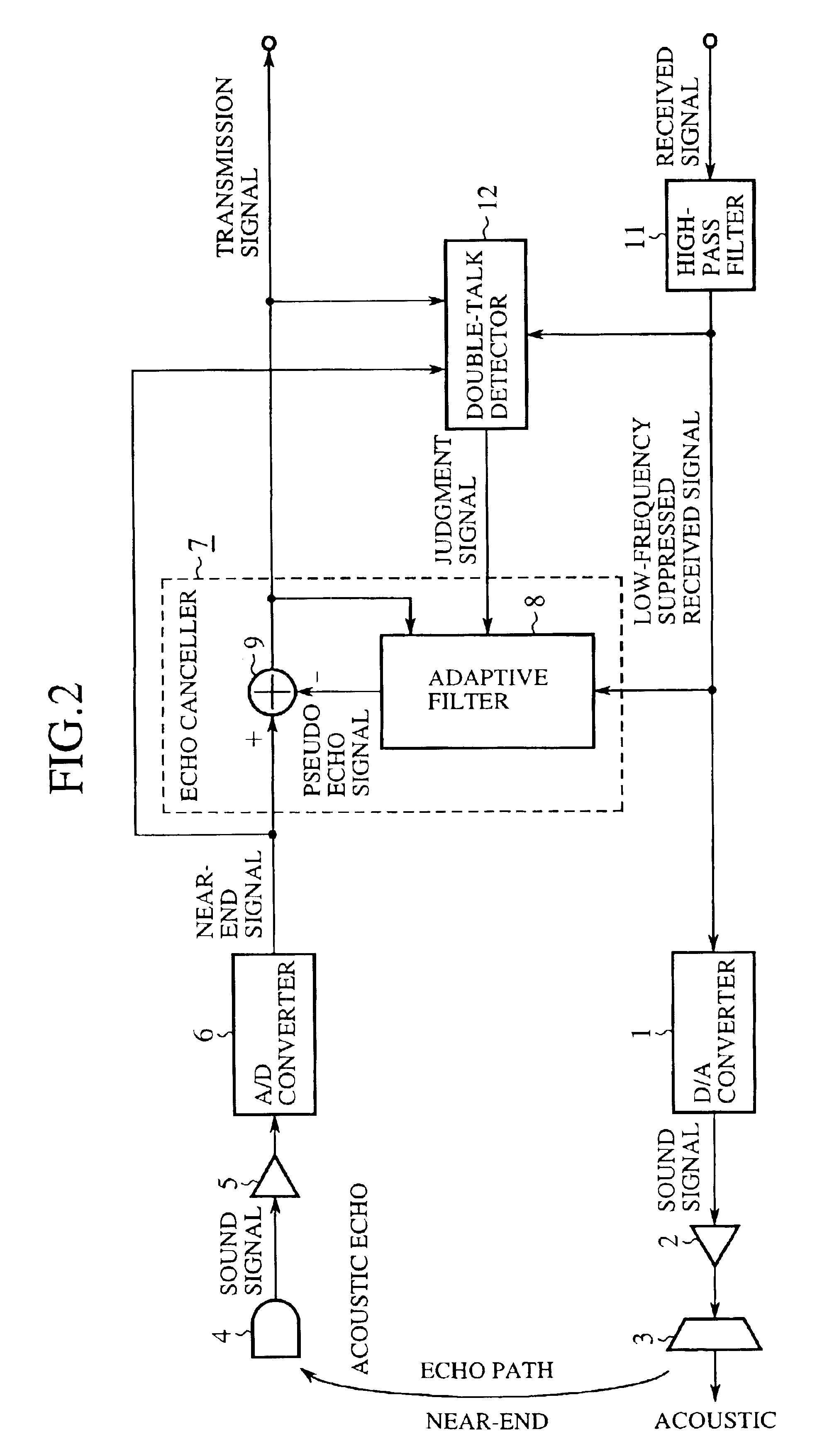Echo processing apparatus
a processing apparatus and echo technology, applied in the field of echo processing apparatus, can solve the problems of non-linear distortion of the echo signal, deterioration of the calculation accuracy of the adaptive filter coefficient calculated by the adaptive filter b>8/b>, and large difference between the pseudo echo signal to be generated and the echo signal, so as to achieve the effect of easy handling
- Summary
- Abstract
- Description
- Claims
- Application Information
AI Technical Summary
Benefits of technology
Problems solved by technology
Method used
Image
Examples
first embodiment
FIG. 2 is a circuit block diagram showing a configuration of an echo processor according to a first embodiment of the present invention. In the diagram, reference number 11 indicates a high-pass filter for suppressing a low-frequency component in a received signal in a digital form. Reference number 1 designates a digital to analogue (D / A) converter for converting the low-frequency suppressed received signal in digital form to an analogue sound signal, 2 denotes an amplifier for amplifying the sound signal, and 3 indicates a speaker for outputting the acoustic corresponding to the sound signal amplified. Reference number 4 designates a microphone for inputting the acoustic and converting it to a sound signal, 5 denotes an amplifier for amplifying the sound signal, and 6 indicates an analogue to digital (A / D) converter for converting the amplified sound signal to a digital signal. Reference number 7 designates an echo canceller for generating a pseudo echo signal based on the low-fre...
second embodiment
The double-talk detector 12 of the first embodiment performs to judge the double-talk when the following both cases:
The equation (4) is not satisfied and both the equations (5) and (7) are satisfied; and
Both the equations (4) and (5) are not satisfied and both the equations (6) and (7) are satisfied.
However, in a case when Rs is large, namely over 362, that is, when the background noise is smaller, the equation (4) is not satisfied and the equation (7) is satisfied. Accordingly, when the above condition is established, it is possible to judge the double-talk regardless of the result of both the equations (5) and (6). Accordingly, when the background noise is small, it is possible to judge the double-talk correctly even if S or E is small and to prevent the occurrence of the error detection where the case including the large background noise is judged as the double-talk.
As described above, according to the second embodiment, because the high-pass filter 11 suppresses the low-frequenc...
third embodiment
FIG. 4 is a circuit block diagram showing a configuration of an echo processor according to a third embodiment of the present invention. In the diagram, reference number 17 designates a noise suppressor. Other components are the same of those shown in FIG. 2. The double-talk detector 12 performs the same operation of that in the second embodiment.
Next, a description will now be given of the operation of the conventional echo processor.
The noise processor 17 inputs the near-end signal from the A / D converter 6 and suppresses the background noise component included in the near-end signal and outputs the near-end signal including the component other than the suppressed one.
There is a literature (Reference 4) that disclosed a spectral subtraction method as an example how to suppress the background noise component included in the near-end signal.
Reference 4: Steven F. Boll, “Suppression of Acoustic noise in speech using spectral subtraction”. IEEE Trans. ASSP. Vol. ASSP-27, No.2, April 19...
PUM
 Login to View More
Login to View More Abstract
Description
Claims
Application Information
 Login to View More
Login to View More - R&D
- Intellectual Property
- Life Sciences
- Materials
- Tech Scout
- Unparalleled Data Quality
- Higher Quality Content
- 60% Fewer Hallucinations
Browse by: Latest US Patents, China's latest patents, Technical Efficacy Thesaurus, Application Domain, Technology Topic, Popular Technical Reports.
© 2025 PatSnap. All rights reserved.Legal|Privacy policy|Modern Slavery Act Transparency Statement|Sitemap|About US| Contact US: help@patsnap.com



